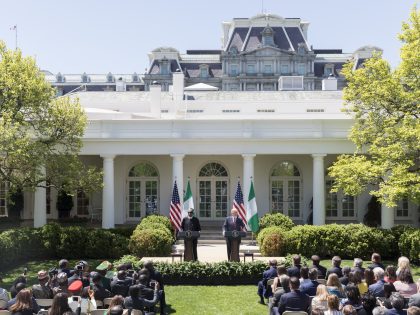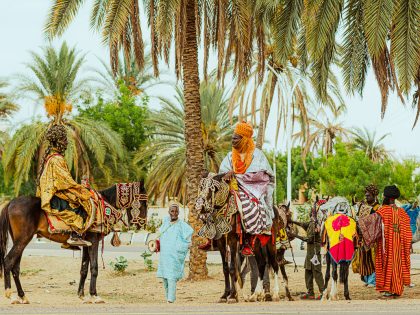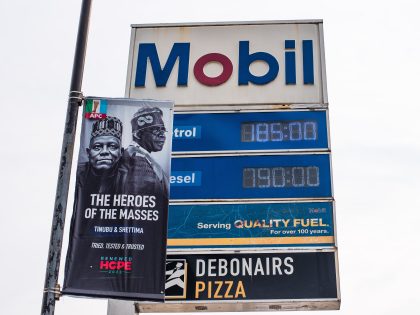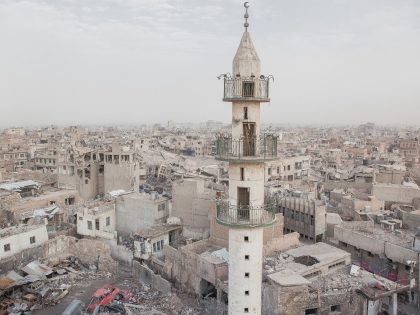The making of a film empire
The book 'Nollywood: The Making of a Film Empire' takes a journalistic approach to that industry without falling back on the bombast of most popular accounts.

Image credit Akintunde Akinleye from the "Inside Nollywood" series via Flickr.
Short introductions are all the rage in scholarly publishing these days, and it’s easy to see why. Relatively inexpensive and readable in a single sitting, these downsized monographs, which can easily fit in a coat pocket, purport to provide brief overviews of broad subjects. They’re certainly teachable — attractive to students for their cost and concision — but they can prove maddening to those who know their subjects especially well, and who may crave more nuance than a mere 30,000 words will allow. There are other potential pitfalls, of course. For instance, a single factual or typesetting error can spell disaster for an author unable to refine or reiterate claims in so limited a space.
Recently published by Rutgers University Press, Valérie K. Orlando’s New African Cinema — part of Rutgers’ “Quick Takes” series on film and popular culture — evinces such pitfalls: the name of the great Senegalese director Safi Faye is misspelled on multiple pages; one important date is off by a century; and Orlando offers the troubling suggestion that “homosexuality” is a form of violence. New African Cinema is otherwise rich and rewarding, but the errors loom disproportionately large in a work of its length.
Fortunately, Emily Witt’s pocket-sized Nollywood: The Making of a Film Empire, just published by Columbia Global Reports, is almost entirely free of factual errors, offering a detailed yet snappy introduction to an industry that is exceedingly difficult to condense for any readership, let alone one with no previous knowledge of African screen media. Witt, who has written for GQ and The New York Times, takes a journalistic approach to Nollywood without falling back on the bombast of most popular accounts, which tend to exoticize the industry almost beyond recognition, expressing a distinctly Western wonder at the activities of the undifferentiated African masses. In this short book, chapters contextualizing Nollywood as a popular art and commercial industry alternate with effective plot summaries of key films (including Amaka Igwe’s classic melodrama Violated, from 1996, and Daniel Oriahi’s more recent Taxi Driver: Oko Ashewo, from 2015). Witt, who researched the book in Nigeria, also provides firsthand accounts of various activities, from micro-budget filmmaking in Asaba to a splashy, star-studded movie premiere at The Palms, a mall in Lekki. Her wry humor occasionally comes through, but it never seems condescending or otherwise disrespectful. One senses that the author genuinely admires the artists and entrepreneurs with whom she spent time, and this reader, at least, can attest to the accuracy of her warm, evocative character portraits.
Witt gets into some trouble, however, when quoting industry insiders, some of whom make misleading statements that are allowed to stand uncorrected in the text. For instance, the famed producer and marketer Gabriel Okoye (also known as Gabosky) is quoted (via a Nigerian magazine interview) as saying that he released Lancelot Oduwa Imasuen’s Invasion 1937 — a film whose title is actually Invasion 1897, and that was first released not in 2016 (as Gabosky has it) but two years earlier. At one point, Witt speaks to a crew member whose claim — that he was put out of work when, in 2006, the Lagos state government outlawed billboards — the author unquestioningly reproduces, failing to mention that, at that time, the government merely attempted to crack down on illegal signage.
One of the most pleasurably eccentric aspects of Witt’s book is that its prologue is outsourced to the brilliant Femi Odugbemi, a documentary filmmaker, television producer, screenwriter, photographer, cinematographer, and emergent historian of Nigerian media. Odugbemi provides a compelling account of Nollywood’s development — a colorful précis of Witt’s own passages. This outsourcing has its drawbacks, however: for all his acumen, Odugbemi manages to perpetuate the binary opposition between colonial film units and “African cinema,” suggesting that the former were unpopular when, in fact, they were anything but. In the 1950s, Adamu Halilu and other Nigerian directors made immensely successful, widely seen educational films that featured more Black faces than spectators were likely to see in the American, Asian, and European films that, at the time, were the bread and butter of the commercial theaters. Documentaries produced under the “modernizing” auspices of colonial powers have influenced a variety of cultural forms that flourish in contemporary Nigeria, including television soap operas and Nollywood films. As Brian Larkin argues in his remarkable book Signal and Noise, colonial media “fed into postcolonial visual culture and cannot be so neatly separated off.”
Witt certainly isn’t immune to offering questionable assertions of her own. Ossie Davis’ historical epic Kongi’s Harvest (1970), for instance, is hardly a “classic,” as she calls it. Shot entirely on location in Nigeria, this Nigerian-American-Swedish co-production, with its all-Black cast, was boycotted by Lebanese theater owners, who feared its capacity to cultivate a popular appetite for African cinema, and who, at the time, enjoyed a virtual monopoly on exhibition in Nigeria, aided as they were by powerful Hollywood studios. More to the point, Kongi’s Harvest, with its rather tame, allegorical take on Nigerian political troubles, was poorly received by those who managed to see it in boxing halls, classrooms, and other nontheatrical spaces; Soyinka disowned it, and prominent academics denounced its American authorship.
Finally, I disagree with Witt’s decision use the term “Nollywood” to include Hausa-language productions from northern Nigeria, whose popular label — “Kannywood” — indexes a certain estrangement from Nollywood, rather than, as Witt has it, an allegiance to this distinctly southern Nigerian industry. But one of the pleasures of studying Nigerian media is that there is always much room for debate, and there is by no means a firm consensus on how to draw Nollywood’s cultural, geographical, and linguistic boundaries — nor, perhaps, will there ever be. My reservations about certain aspects of Witt’s book thus amount to little more than quibbles. This is an excellent, engaging introduction to an industry that deserves continued attention.



















